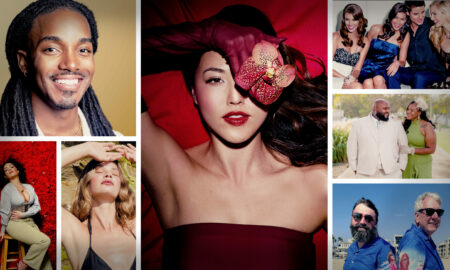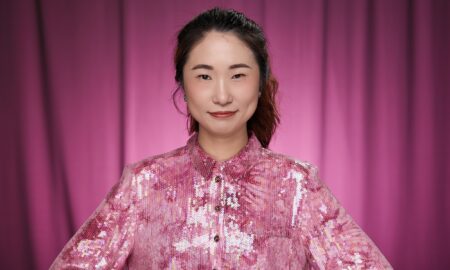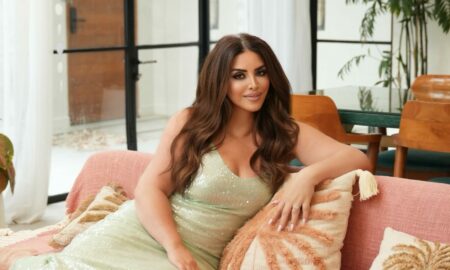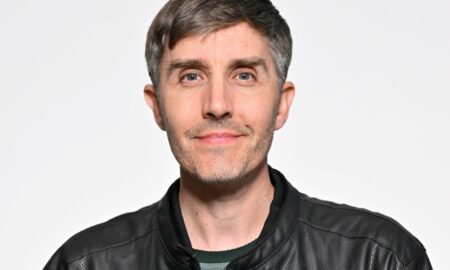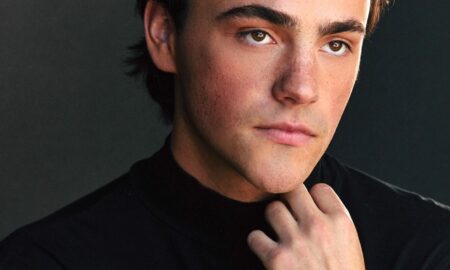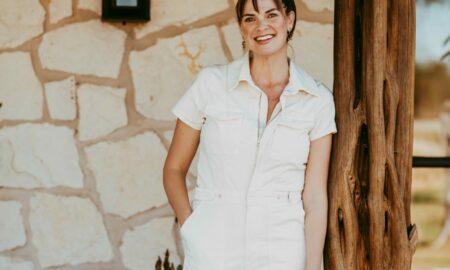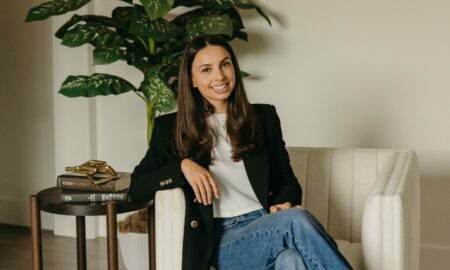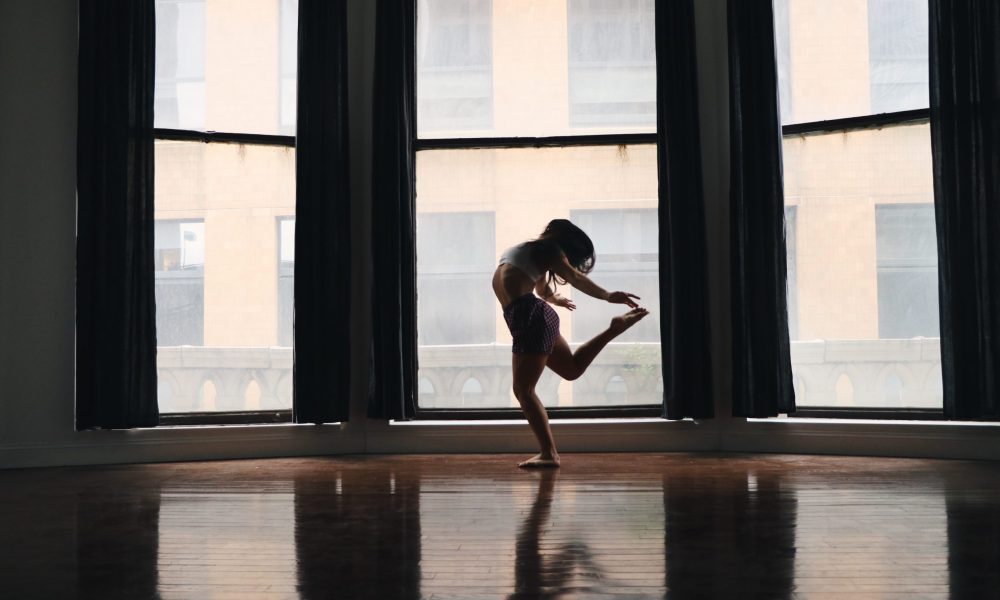

Today we’d like to introduce you to Casey Shea.
Casey, let’s start with your story. We’d love to hear how you got started and how the journey has been so far.
I grew up in a small town in Massachusetts. My mom put me in dance when I was two years old, and it’s been the most consistent thing in my life since. I definitely wasn’t a natural-born dancer but I had the heart. I always loved moving my body and being on stage, it felt like I could be myself but also whoever I wanted to be. I trained for years at a dance studio just outside my town. Dance meant so much to me and as my schedule got more serious, I grew more invested. Once I was 12 or 13 years old, I knew that this was the only thing that I wanted to do. I spent my summers training at different intensives every year, trying to meet as many people as I could and struggling to improve as quickly as possible. This urgency to improve rapidly was an effective motivator for me to work harder, but sometimes it was difficult for me to find the balance between that intense work ethic and patience. Because of this, I tended to try a bit too hard growing up and was repeatedly being told to calm down and settle, but never felt like I had a reason to. I was generally pretty insecure and anxious around dance because of this. I always felt like I was trying to prove myself but it would never be enough. I had a lot of reasons to believe that I would never become a dancer, but I knew I loved to dance more than I wanted to give into those doubts.
I went to college at the University of the Arts in Philadelphia under the direction of Donna Faye Burchfield. This school really changed my life in more ways than I knew possible. The care I received from the faculty and my peers as a whole feels unmatched. Uarts cracked open so much for me. It taught me about dance as an academia, about the anatomy of the body, how to make, how to research, how to think about dance and ourselves as bigger than what we are. Uarts taught me to use dance to better understand how I can be in the world. My professors truly wanted the best for me and I had never known that type of security. Even though I felt this safety, I couldn’t settle and it took me a long time to change the way I talked to myself. I was still in overdrive mode, making an effort to justify my right to even take up space in the room. My modern teacher and mentor, Katie Swords Thurman, dedicated so much time trying to help me see myself in a different, more positive way. With her help, I spent years figuring out how to soften and understanding how to believe in myself.
During Junior and Senior years of college, I started to hone in on what I was interested in. I knew I loved making dance, I knew I loved being a part of process-based contemporary/modern work, and I knew I loved learning repertoire from different guest companies throughout my time at Uarts. I also had the opportunity to travel around Europe and Israel, performing and dancing with my fellow classmates. Throughout these four years, I had accumulated so much knowledge around the history, the making, the watching, and the talking about dance. I felt prepared to move on, knowing I had a support system as strong as this one. Dance can do more than we think, and Uarts helped me realize that my power in dance is endless. My dream was to move to Los Angeles after graduating, and while the majority of my class and the people I knew were in New York, I decided to go.
This past September, I packed up my car and drove from Massachusetts to LA. I don’t think anything or anyone can quite prepare you for life postgrad. It’s really hard adjusting to life outside of an institution. I had gotten so accustomed to my classmates and professors, then all of a sudden I was across the country by myself. I was terrified going to dance classes, but I started making friends and I think that’s how things started to move forward for me. A friend I had met asked me to be a part of her choreography project, and from there, more things started happening. I met a lot of people and started performing more in videos, festivals and independent projects. I’ve only been in LA for eight months and I already feel like I have a circle of people that I connect within dance. There’s something really special about the concert dance scene in LA. It’s small and full of fire, everyone is trying to get their work out there at the same time, but it feels like a giant collaboration. That’s what’s so exciting, the people that I’ve met and look up to here, are constantly pushing boundaries and their own art while also supporting and promoting others’ art. I’m excited that I get to be a part of this community and I can’t wait to start putting my work out there for people to see.
Overall, has it been relatively smooth? If not, what were some of the struggles along the way?
I don’t think any road is smooth. Everyone has their struggles inside of their careers and personal lives. I think those difficulties can make good art. The trial and the rejection can make you want it more, I feel that fire and urge to prove everyone that didn’t believe in me wrong. That fire has kept me going since I was a kid. I cared so much about dance, and my love grew stronger every year. Every ‘no’ would hurt more each time because I wanted it that much more. But after I would get over that feeling of defeat, sometimes it would take a while, I would get angry at that ‘no’ and at that feeling and at dance. That would light the fire for me to keep going because I needed to. It’s not just about the struggles, though, but the highs and lows of it all. I think since I’ve had a lot of rejection and no’s, that the yes’s and the successes feel that much better. It’s important to feel proud when you accomplish something because you did it for yourself. It’s when you keep going after all of the rejection, just to get that one small (maybe big) thing that makes it all worth it. I’m sure most dancers can relate to that; it’s a hard career.
It feels difficult for me to give advice since I am a young woman starting my journey right now. It feels like everything, up until this point, has been the preface. It’s my first time outside of an institution and my first time really being on my own, making things happen for myself. But I can say that what matters to me the most is effort and care. Keep trying. I don’t think it’s about what we have now but what we’re capable of. With this rigorous effort, I think we can constantly reach new thresholds and then break through them, to create new ones for ourselves. Because once you reach something new or ‘become’ something new, that place is now going to ask more of you. And you’re going to have to start over and try again. (and then again and again) I’ve noticed that the people who last the longest in their dance careers are the ones who are steadily trying. Trying new things on their bodies, trying new mediums of art, trying to find more than what is already there.
Trying to create something new because what you need to say isn’t already in the world. It may be a culmination of things you’ve been taught or things you’ve seen or been attracted to but when you collage it together and sift all of these things through yourself, it becomes something new. It’s about the effort, more than the triumphs or the products. I really believe attempting, even if it doesn’t work out, is the most significant part. The other part is care. Caring about dance and my art has pushed me further than anything. Without care, there wouldn’t be effort. There’s a lot that goes into care, though. Tending to your body, listening to your needs, resting, living life outside of your art and career. Caring for yourself as a person and fueling yourself in life and love and fun is just as essential as that rigorous effort. It took me a really long time to get this one. I got caught up in overworking because I thought if I just tried hard enough, then things had to happen.
But that gets exhausting and it isn’t as sustainable. You have to cherish yourself and all aspects of who you are in order to be a longetivable artist and person. I love a lot of things and people, dance is one of those things, possibly one of the most important, but I’m made up of so much more. I think this can take some of the pressure off of things. Yes, it’s all very serious but it’s also just life. Things are gonna suck and hurt a lot and each time I get further into this life, things hurt a bit more. But things also become more beautiful. There’s so much magic and happiness that comes along with the shit. It’s about the balance. Between the bad shit and the magic. The overworking and the resting. The care and the effort. You can’t have one without the other, but as long as we keep trying and caring, things are bound to come up.
We’d love to hear more about your work.
The director of my program, Donna Faye Burchfield, would consistently say ‘pay attention to what you’re paying attention to.’ I’m constantly noticing what I’m interested in and attempting to analyze why. I’ve always loved making. I would make up dances in my basement for hours as a kid. But outside of dance, I love drawing and painting and recently collaging, photography and filmmaking. It all feeds into the work I constitute inside of dance. The collages and paintings I make are like mood boards for my pieces. I’ve always been a visual and hands-on learner, so now I try to think about my work in as many mediums as possible. When I’m working on a piece, everything I create or see during that time feels like fragments of a portfolio.
I’m an extremely nostalgic person, so sometimes dance’s temporality makes me apprehensive. Dance itself is a fleeting art form, it’s impossible to duplicate exactly, so it’s never the same more than once. That causes dance to be so magical and also kind of tragic. That’s why I often turn to other forms of art that are a bit more tangible. I think, if I have a journal, a collage, a playlist, a film and the piece itself, it feels like I have a treasure box full of things from that period of making. I have these little vignettes in the forms of dance (and a lot more) that represent the most important parts of me and my life. It’s nice to look back on, to remember but also as a way to move forward. Every piece I construct is new and distinct, but it comes from everything I’ve made before. It’s a continuous flow of generating material and trying to finalize and then starting over.
More specifically, as far as my choreography in dance goes, I’m interested in effort, softness, exaggeration, intimacy, and more recently the body and sexuality. Currently I am starting to work on a new piece for the Young Choreographer’s Festival performing at Symphony Space in New York City. My process is extremely collaborative, so working with people that I trust is crucial. I start a rehearsal with a discussion and maybe some writing. We will start playing with numerous movement tasks and bookmarking things that feel right. I will have my dancers make solos or duos based on instructions I’ve given them. Then I teach a movement phrase and have them manipulate that through repetition and reordering. So eventually we have all of these pieces; the solos, the duos, the phrase, the manipulated phrase, the bookmarks, etc.
From there, it’s just collaging it all together. We organize a loose score, overlapping and layering various pieces, finding moments of stillness, working with a solo and then creating points where everyone’s dancing cohesively. Once we have this score, I put my playlist on shuffle and we try it. There are some magical moments, where someone’s solo goes perfectly with the song that just so happened to come on. And we save those moments and we try over and over, rearranging, adding, and deleting until things feel right. Then there’s normally a moment where it feels too right; the score is nice and it all makes sense. That’s when I have to start again and fuck everything up. I’m afraid of being safe. I don’t want things to make too much sense, I think it’s good to force yourself to be uncomfortable throughout the process. I get really attached to certain ideas but sometimes I have to be less precious with them for the sake of the piece. After we finalize the music and the score, it’s about the last tweaks. Enhancing what’s already there, softening into each other while still pushing the edges of the piece so it can expand wider every time it’s shown. Watching my work is the most rewarding thing, though it’s difficult once things are out of your control. But once the piece is happening, everything else melts away. It’s really special to see a group of dancers that you care about so deeply, nurturing your (our) work. It’s a mutual trust and it’s really beautiful, I think.
There’s a wealth of academic research that suggests that lack of mentors and networking opportunities for women has materially affected the number of women in leadership roles. Smart organizations and industry leaders are working to change this, but in the meantime, do you have any advice for finding a mentor and building a network?
I think people want to work with good people. If you’re kind and respectful and care about what you’re doing, chances are that will be reciprocated. Going back to ‘pay attention to what you’re paying attention to,’ I think it’s good to notice who you’re drawn to and explore why. If you want to dance with someone, just ask them. The worst that can happen is they say no, but you could also form something really incredible. People are often so afraid to put themselves out there and meet new people. I can relate to that. Rejection is a hard feeling. But the dance world doesn’t have to be a ‘cut-throat’ place. I think there’s a way that we can be in this world in a more supportive manner.
Growing up in dance competitions, dance felt heavily seeped in comparison and seemed to focus on the triumph of the individual. I am grateful for the lessons I learned during those years of my life, but I know now that there’s another way. I can admire and uplift others when they succeed, knowing that their triumphs don’t take away from who I am as a dancer. Marygrace McNally has been my mentor since I was 12 years old. She is a professional dancer based in New York City. We grew up at the same home studio and both went to Uarts. She is everything a mentor should be and she has taught me so much. It’s important to have a mentor that you can connect with on things other than dance. Marygrace is an incredible teacher, but I can trust her with more than just dance. I trust that she has my best interests as a person and that matters the most. Finding someone who inspires you, pushes you, believes in you and trusts you. Getting to watch Marygrace flourish in her career, has been an honor. She has remained humble and honest as an artist and I will always admire her work. She’s one of the dancers who is always trying to say something new because what she needs to say isn’t already in the world. She has such a beautiful voice in dance and in life, I’m lucky that she is my mentor.
Contact Info:
- Address: 13435 Burbank blvd
Van Nuys, CA 91401 - Phone: 9788281226
- Email: [email protected]
- Instagram: caseeeey123
- Facebook: Casey Shea







 Image Credit:
Image Credit:
Lee Gumbs
German Vazquez
Jenna Miller
Suggest a story: VoyageATL is built on recommendations from the community; it’s how we uncover hidden gems, so if you or someone you know deserves recognition please let us know here.

